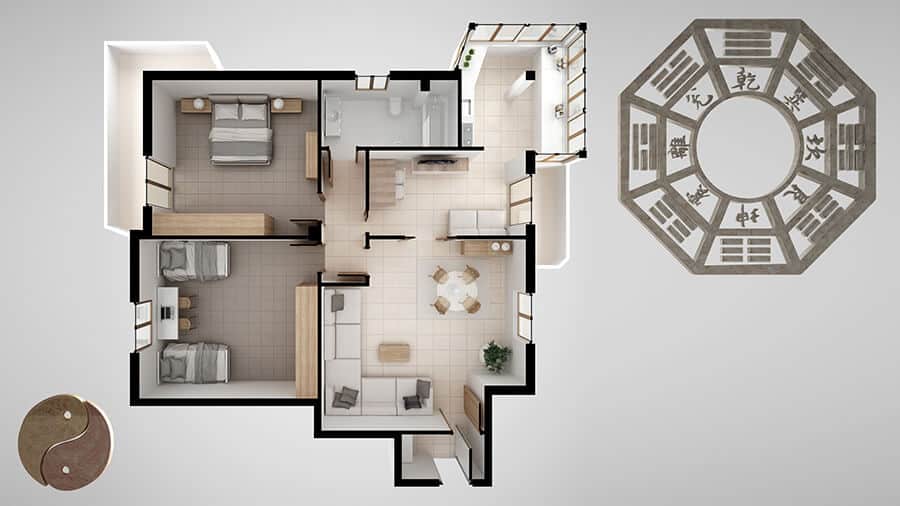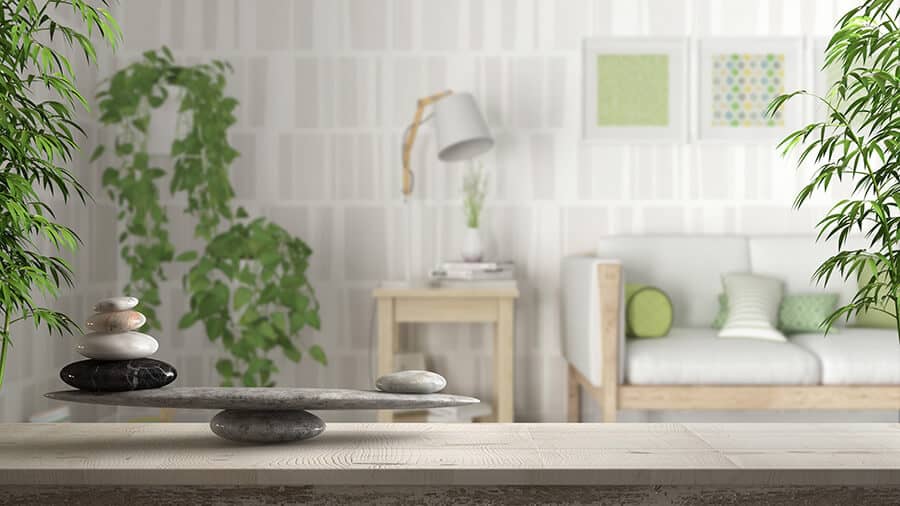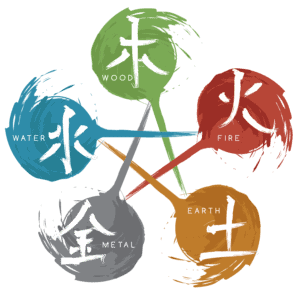Feng Shui comes from Tao philosophy and it translates from Chinese to mean ‘wind’ and ‘water'. In simple terms, it is a practice of arranging the pieces in living spaces that create balance with the natural world.
While some believe that applying Feng Shui to your home can bring certain things into your life, there is also a lot of aesthetics, psychology and rule of manifestation that go into it.
Some of the overall concepts of the practice involve neatness and arranging furniture to allow for clean and open spaces.
Commanding Position
Many Feng Shui rules make innate sense to us as humans. For example, it is important for your bed, desk, and stove to be in a commanding position.

These essential pieces of furniture are believed to represent the most significant aspects of our lives. The bed represents you, the stove represents wealth and resources, and the desk represents a career and path of life.
The idea of a commanding position is really important in Feng Shui.
It simply means that when you are using the item, for example, lying in bed, you need to be able to see the door without being directly in line with it.
The concept is that it gives you a good view which eases your mind on a subconscious level. It also allows you to be more aware of potential opportunities coming your way.
The Five Elements
Feng Shui is a concept that was originally derived from an ancient poem about human life flowing and connecting with the environment around it.
The goal of it is to be able to harness energy forces as well as establish harmony between people and their environment. In addition to the commanding position, the most essential principle of Feng Shui are the five elements.
The five elements come from Taoism and they are earth, metal, water, wood, and fire.
The idea is that the elements are five interrelated phases in life that work together to create a complete system.
An integral part of Feng Shui is balancing these in your home. In order to incorporate the elements into your home and life, it is important to define the focus of your energy.
It is essential to choose up to three areas of your life that you wish to improve. Based on these, you then add the relevant shapes or colours into your space.
Element-ary
The elements and what they represent are as follows:

Earth
Qualities: groundedness, self-care and stability.
Shapes: flat and square.
Colours: brown, orange and yellow.
Season: transitions between autumn, winter, spring and summer.
Areas: health, knowledge and partnership.

Metal
Qualities: efficiency, precision and beauty.
Shapes: circular and spheric.
Colours: white and metallic.
Season: autumn.
Areas: helpful people and children.
Water

Qualities: down
wardness, flow and shifting.
Shapes: wavy and curvy.
Colour: black.
Season: winter.
Areas: career.

Wood
Qualities: expansion, vitality and upwardness.
Shapes: columnar and rectangular.
Colours: green and blue.
Season: spring.
Areas: family and wealth.

Fire
Qualities: passion, illuminating and brilliance.
Shapes: triangular and pointy.
Colour: red.
Season: spring.
Areas: fame.
So for example, if you wish to work on the area of fame, you may consider adding a triangular or pointy red table to your living room.
Not only will that pop of colour be pretty, but you will think about your goal of gaining fame every time you look at it.
The Bagua Areas
The final most essential part of Feg Shui is bagua. Like with the elements, it is important to identify up to three areas that need the most attention.
It is impossible to work on all the areas at once. There are nine areas of bagua and each one embodies an element, a number, a colour, a shape, a season and a representation such as career, family, etc.
Feng Shui stems from Taoist traditions and ancient concepts that people and the natural world are connected. While the concepts behind it have spiritual beliefs, there is a lot of common sense involved as well.
The idea of having open spaces and neatness is expected and enjoyed worldwide.
There is also some psychology behind the subconscious reactions to certain furniture arrangements.
Finally, simply being aware of the areas in life that you want to improve is a great way to bring about positive change.
If a piece of furniture helps remind you of your goals, why not give it a try?
Photos: Shutterstock
From Feng Shui to five seconds. Here’s how such a small amount of time can have a huge impact on your life:
Support us!
All your donations will be used to pay the magazine’s journalists and to support the ongoing costs of maintaining the site.
Share this post
Interested in co-operating with us?
We are open to co-operation from writers and businesses alike. You can reach us on our email at cooperations@youthtimemag.com/magazine@youthtimemag.com and we will get back to you as quick as we can.











